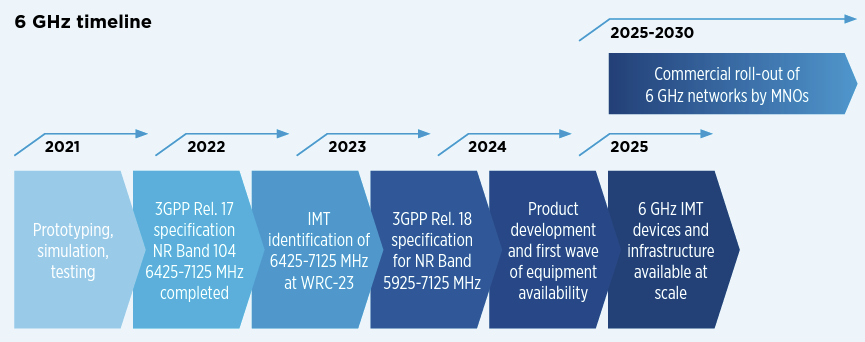Chile’s Ministry of Transport and Telecommunications has opened the door to using 6 GHz for 5G, reversing an earlier decision to make the whole band (5925-7125 MHz) available for Wi-Fi.
Instead of assigning the full 6 GHz band for licence-exempt use, only the lower part of the range (5925-6425 MHz) will now be set aside for RLAN technologies like Wi-Fi 6E. The upper part will now be considered for 5G and in the official documentation of the decision, the Chilean Ministry stated that the reasoning behind the reversal is the need to adapt to the reality of the market. It was further stated that Chile will now await a potential decision on the band’s future at ITU World Radiocommunication Conference 2023 (WRC-23).
While the WRC-23 agenda discusses the entire 6425-7125 MHz band in only the EMEA region, there is support for using this spectrum for licensed mobile throughout the world. Chile is the latest country from outside the ITU’s Region 1 (EMEA) contemplating broader harmonisation of the 6 GHz range. Recent discussions at the Asia-Pacific Telecommunity also showed the growing interest in the band’s development in all regions. In EMEA, meanwhile, there is already preliminary support in Africa and the CIS for 5G in the upper 6 GHz band, as well as several major European markets.
The welcome update of Chile’s decision is part of a growing realisation that 6 GHz is needed to meet future 5G spectrum needs. In 2020, a number of countries in Latin America moved towards adopting the position, supported by the US technology sector, of allowing only Wi-Fi / RLAN technologies in 6 GHz, while South Korea and Saudi Arabia also made the same decision during this period. However, two years later this group has not grown while support for licensed mobile, at least in the upper 6 GHz band, is now a global trend.
Thus, while the agenda of the WRC only mentions 6425-7125 MHz in EMEA, the results impact the band’s use all over the world. 6 GHz 5G spectrum can play a central role in sustainable social and industrial development. With its ability to offer high-capacity, city-wide 5G, mid-band spectrum like 6 GHz plays a core role in delivering 5G networks all over the world and with them enduring economic growth.
Going forward, the GSMA recommends that:
- 6425-7125 MHz is made available for licensed 5G by 2030.
- 5925-6425 MHz should be considered for licensed 5G, or licence-exempt on a technology neutral basis.
Also, the GSMA’s vision for the 6 GHz band states that:
- Mobile networks will need, on average, 2 GHz of mid-band spectrum per country by 2030. This is challenging to achieve without 6 GHz.
- 6 GHz capacity will be required to meet increasing customer demand at the required speeds of ITU IMT-2020.
- Mobile networks are already highly densified, but 6 GHz can enable the growth of sustainable 5G capacity on existing sites.
- Timely availability of 6 GHz, at reasonable conditions and price, will drive cost-efficient network deployment, help lower the broadband usage gap and support digital inclusion.
The outlook for the 6 GHz IMT ecosystem is robust, according to a recent report from GSMA Intelligence. This found that there are no technical barriers to developing, and commercialising, 6 GHz IMT solutions. Device and infrastructure solutions can operate in the band, just like any other. Also, critical players in device component and network infrastructure ecosystems are ready to develop 6 GHz IMT products in line with customer demand. From the start of development, ecosystem players expect they can have solutions ready in 6 to 12 months.

Reaching the goal of an average of 2 GHz of mid-band spectrum per country by 2030 is important for several reasons. Mid-band spectrum will drive an increase of more than $610 billion in global GDP in 2030, producing almost 65% of the overall socio-economic value generated by 5G. However, under spectrum constrained to today’s assignments, 40% of that impact could be lost: $360bn in 2030 alone.
WRC-23 is scheduled to take place from 20 November to 15 December 2023 in Dubai. To learn more about what’s at stake, please visit the GSMA WRC Series website.
Read this article in Spanish here.
